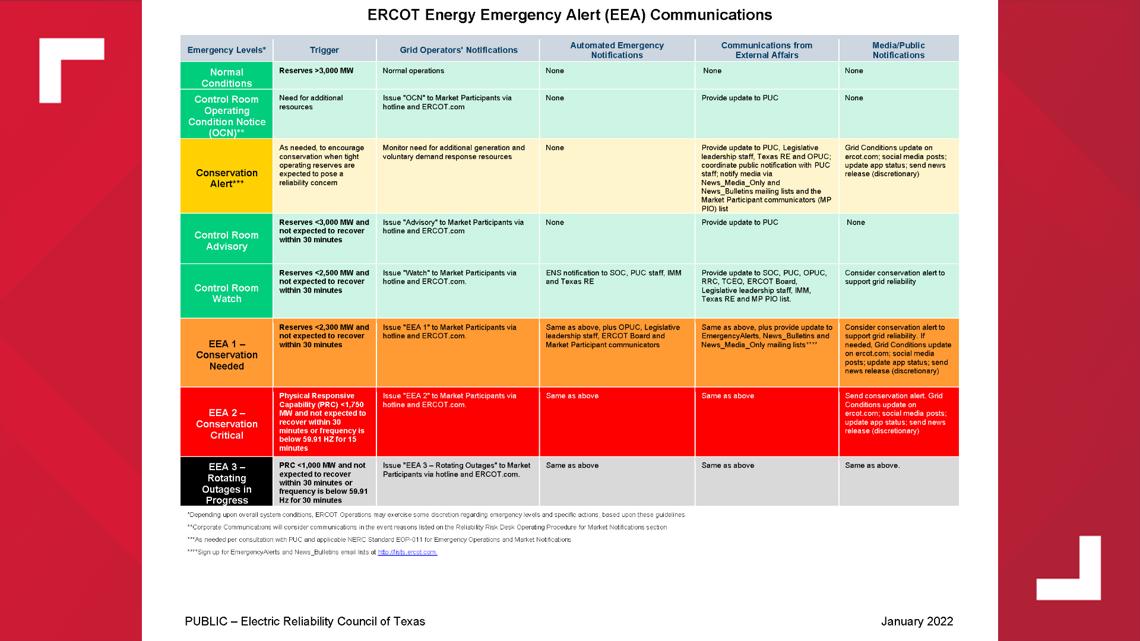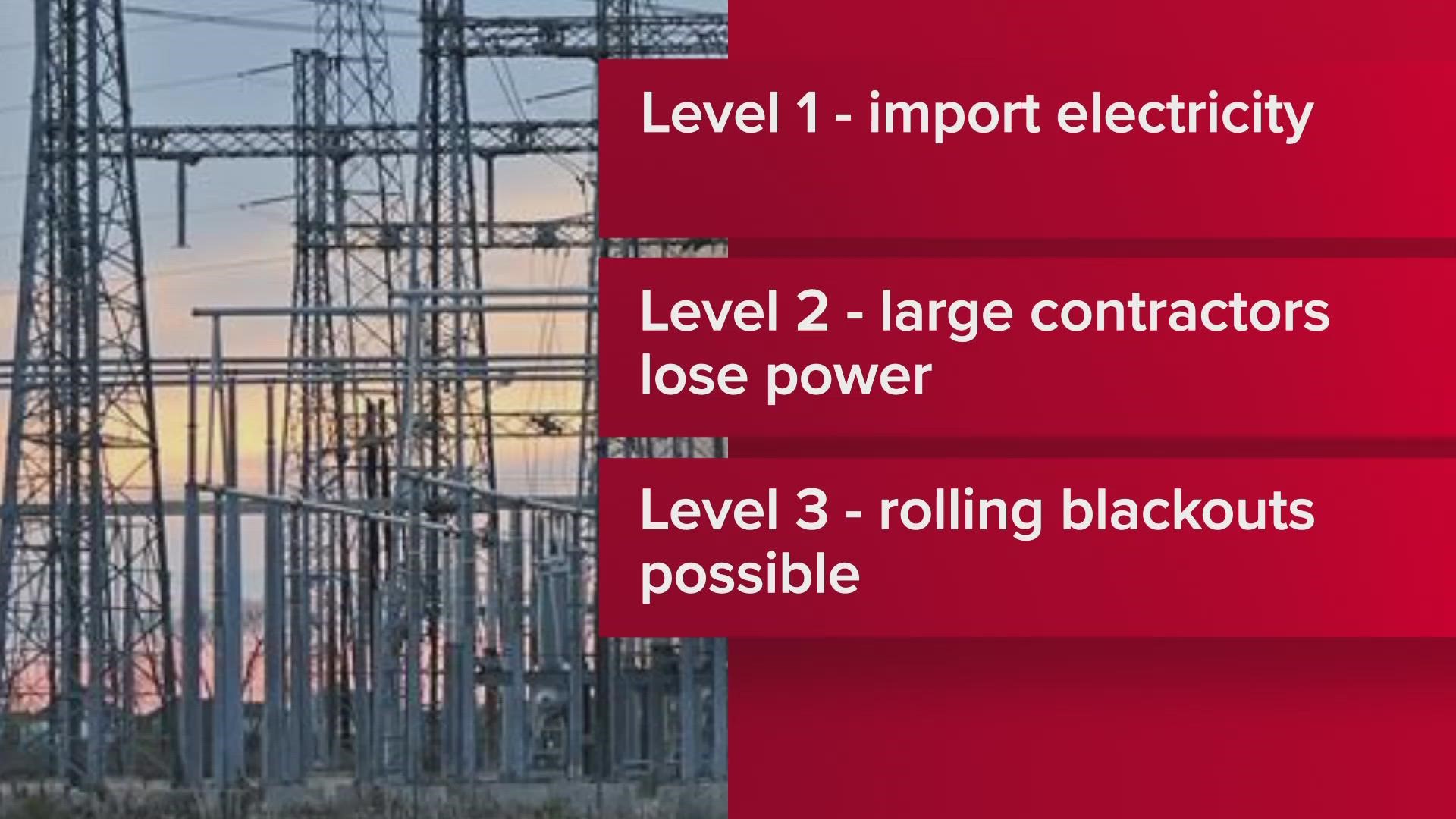AUSTIN, Texas — The Electric Reliability Council of Texas (ERCOT) manages the power grid for nearly all of Texas.
ERCOT’S grid conditions dashboard shows the likelihood of blackouts. Operating reserves must stay above 3,000 megawatts (MW) to run under normal conditions. ERCOT data shows one megawatt can power 200 homes during peak demand.
If operating reserves drop below 3,000 MW and are not expected to recover within 30 minutes, ERCOT will deploy resources prior to issuing an emergency.
ERCOT can bring all power plants online, call for contracted commercial/small industrial customers to cut power and have transmission companies reduce voltage.
If the reserves drop below 2,300 MW and are not expected to recover within 30 minutes, ERCOT will enter into emergency operations.


There are three levels of emergency operations.
Energy Emergency Alert (EEAs) Level 1: Operating reserves fall below 2,300 MW and ERCOT does not expect it to recover within 30 minutes. ERCOT can get a limited amount of power from neighboring grids, up to 1,220 megawatts.
EEA Level 2: Operating reserves fall below 1,750 MW and ERCOT does not expect it to recover within 30 minutes. ERCOT will send an energy conservation alert. Large industrial customers contracted with ERCOT will get paid to cut power.
EEA Level 3: Operating reserves fall below 1,430 MW. ERCOT will call on local electric utilities to begin rolling blackouts. If the reserves fall below 1,000 MW and/or the grid’s frequency level cannot be maintained at 60 hertz, ERCOT will order transmission companies to cut power to larger sections of the power grid.
"Separate from EEA procedures, ERCOT can also issue a conservation request. This request to the public can help reduce demand at any time," ERCOT's EEA Overview shows.
ERCOT has called for blackouts four times in the last 53 years.

